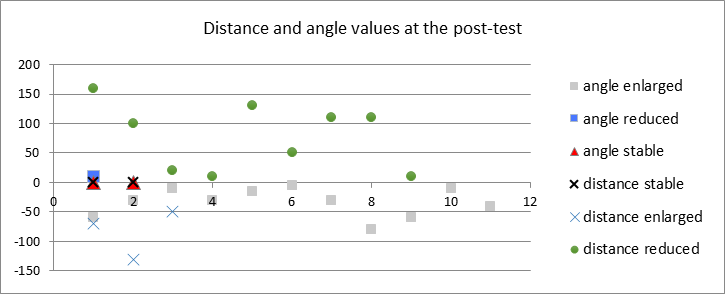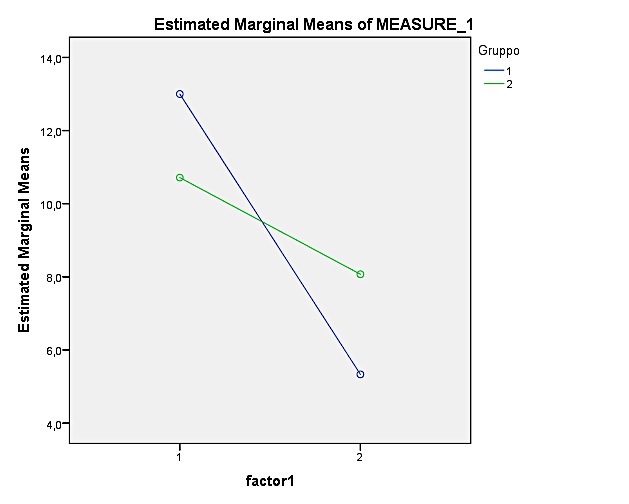Abstract
Due to massive overuse of technology, teenagers nowadays have less opportunities to become familiar with their body (
Keywords: Proprioceptive AwarenessBreathing TechniquesMeditative PracticesBody Spatial Orientation and PositioningStates of Mood
Introduction
Virtualization of everyday life entails a progressive and worrisome distance from self-perception and from body contact seen as a means of expression of identity as well as a privileged channel of communication and relationships. Excessive use of new technologies among the new generations causes the decrease in empathetic capacity at different levels: from sharing real experiences with true friends to the movement and the perception of the body in space. As a result, young people often experience an increased difficulty in feeling comfortable with themselves and with others.
Italian Ministry of Education guidelines have highlighted since 1982 the importance of self-consciousness through physical activities, as they provide each student with personal management tools (Miur, 2009; D.P.R. no. 908, 1982).
Problem Statement
It is a well-recognised fact that teenagers nowadays have less opportunities to become familiar with their body due to their massive overuse of technology (Kurzweil, 2008; Combi, 2000) and control internal and external proprioceptive stimuli (Rose, 2010, Cuomo, 2007; Ivanenko et al., 1999, 2000; Allum, 1998; Massion, 1992; Goodwin et. al., 1972). The detachment induced by virtual realities can cause difficulties in the processing and integration of information at a physical, cognitive and emotional level (Macdonald,1992; Livingstone, 2008; Coklar & Sahin, 2011).
Research question
Can a protocol of static and dynamic balance exercises, combined with breath and proprioceptive awareness have a positive influence on teenagers’ mood states?
Purpose of the study
The purpose of this study is to reflect on the necessity of leading students back to their own corporeality in order to help them regain possession of both neuromotor signals that come from within the body and control of the stimuli coming from external sources. The objective is to reinforce body-awareness, a fundamental skill which is at risk in our contemporary and evermore virtual society.
Research methods
For our pilot study two separate groups of young adults aged between 18 and 19 years of age were created. The experimental group was composed by 14 students of a final year class in secondary school. The control group was composed by 12 students of the same age and from the same school. The experimental group was administered the following tests:
- Pre- and post-balance tests (Fukuda Unterberger test) (experimental group);
- Pre- and post-tests on mood states (POMS) (experimental and control group);
- Written feedback from the partecipants (as a qualitative assessment of the experimental group).
The control group only participated in the POMS.
The pilot study comprised six sessions, each lasting two hours, and it took place from January 12, 2016 to March 1, 2016.
Each session was divided into three phases: I phase - static and dynamic balance exercises with eyes open and with eyes closed; II phase - breathing exercises (Van Lysebeth,1978; Middendorf, 2005; Ferraro, 2008); III phase - making a connection with parts of the body and acquiring awareness of the positioning of the body in space (Ivanenko, Grasso, & Lacquaniti, 1999, 2000; Berthoz, A., & Viaud-Delmon, I. 1999) (Table
During the training many videos and images were shared on a Whatsapp experimental chat group created specifically for this project (Appendix 1).
Findings
FUKUDA UNTERBERGER
The students were asked to march on the spot, eyes closed, and to remain in centre of the circle while counting 40 steps and trying not to move ahead or behind from the centre of the circle drawn on the ground (with angles marked 0°, ±45°, ±90°, ±135° e 180°). They were also asked not to rotate from the axis at 0°.

Concerning the values of the angle of rotation to the right or to the left in the post-test 1/14 students, about 7% of the total, reported a decrease, 2/14 students or about 14% of the total, reported stable data, 11/14 students, about 79% of the total, reported an increase. The results indicate that the training facilitated an improvement of the awareness of linear movements away from the center of the circle, but not of angular movements compared with 0° (Fig.1).
POMS test – The Analysis of variance (ANOVA) with repeated measures was adopted to investigate the differences between the pre and post-training points for both groups (experimental and control). All the sub-scales dealing with the experimental group were analysed with Test Within Subject and Test Between Subject, showing significant results related to the factor Tension-Anxiety only.In this case, the average of points was significantly different between the first and the second phase F (1,27)=28,21, p=.000. Data showed both a significant interaction between the phases and the belonging to one of the two groups F (1,27)=6,70, p=.015. Groups showed points that changed significantly, different in terms of intensity between the pre and post-test phase and this was attributed to the type/nature of the group.
The experimental project detailed above showed how the training had a significant impact in decreasing Tension-Anxiety in the experimental group (Fig. 2) and its results, through the average scores, confirmed a significant decrease in the pre and post experiment T factor.

WRITTEN FEEDBACK - Virtually all of the students reported that the activities on offer allowed them to acquire many new techniques for understanding their own bodies in a hands-on way which they didn’t know before (Appendix 2).
Conclusions
We observed that breathing techniques and proprioceptive awareness acquired through meditative practices, together with static and dynamic balance activities for the body, enabled the students in the test group to lower levels of anxiety and tension that were not lowered in the control group that participated in regular physical activities concerning balance, without access to breathing and meditation exercises.
Limitations of the study
Due to organizational reasons of the school involved in the test, the study did not have a regular weekly continuity and the number of meetings was greatly reduced from the original plan. Equally, organizational issues prevented the administration of the Fukuda Unterberger test to the control group.
Acknowledgements
We wish to thank The Fondazione Internazionale verso l’Etica for its scientific support, as well as the Head Teacher of the Pascoli School of Florence, Dr. Elisabetta Bonalumi, who made the realization of the pilot study possible, and Prof. Giuliano Giovannini, who coordinated school activities and students in both the experimental and control group, for all their cooperation and support.
References
- Allum, J. H. J., Bloem, B. R., Carpenter, M. G., Hulliger, M., Hadders-Algra, M. (1998), Proprioceptive control of
- posture: a review of new concepts. Gait & Posture. 8(3), 214-242Berthoz, A., & Viaud-Delmon, I. (1999). Multisensory Integration In Spatial Orientation. Current Opinion In
- Neurobiology. Elsevier. 9(6). 708–712.Coklar, A. N., & Sahin, Y. L. (2011). Technostress Levels Of Social Network Users Based On Icts In
- Turkey. European Journal Of Social Sciences, 23(2), 171-182.Combi, M. (2000). Corpo e tecnologie. Rappresentazioni e immaginari, Meltemi Editore. Cuomo, C, (2007), La marche, un mouvement vital. Dauphin Éditeur. D.P.R. 1 ottobre 1982, n. 908 - Nuovi programmi d'insegnamento di educazione fisica negli istituti di istruzione secondaria superiore, nei licei artistici e negli istituti d'arte, goals No. 2 -3. Dugnani, S. & Invernizzi, P. L. (2013). Progettare in Educazione Fisica e nelle Scienze motorie. Per la
- programmazione e organizzazione della didattica nella scuola secondaria. Milano, Edizioni Carabà.Ferraro, F. (2008), Attacco all’asma … e non solo. Respirare e viverre meglio grazie alle scoperte del Prof.
- Buteiko e di altri scienziati russi, Forlì-Cesena, Bis Edizioni.Fosha, D., Siegel, D. J., & Solomon, M. (Eds.). (2009). The Healing Power Of Emotion: Affective Neuroscience,
- Development & Clinical Practice (Norton Series On Interpersonal Neurobiology). Ww Norton & Company.Franca G. M. (2014). Oltre i confini del pensiero. Roma. EUR.
- Fukuda T. (1959) The stepping test. Acta Otolaryngol (Stockholm) 50:95–108
- Ganesh, S., Hein T. Van Schie, Floris P. De Lange, Evan Thompson, Daniël H. J. Wigboldus (2011), How The
- Human Brain Goes Virtual: Distinct cortical regions of the person-processing network are involved in Self- Identification with virtual agents, Cereb. Cortex (2012) 22 (7): 1577-1585. Ivanenko, Y. P., Grasso, R. & Lacquaniti, F. (1999), Effect Of Gaze On Postural Responses To Neck
- Proprioceptive And Vestibular Stimulation In Humans. The Journal Of Physiology 519.(1), 301-314.Ivanenko, Y. P. & Grasso R, Lacquaniti F. (2000), Neck Muscle Vibration Makes Walking Humans Accelerate In
- The Direction Of Gaze. The Journal Of Physiology 525.(3), 803-814.Johnson, E. O. & Soucacos P.N. (2012), Proprioception, In International Encyclopedia Of Rehabilitation,
- Available online: http://cirrie.buffalo.edu/encyclopedia/en/article/337/. Kurzweil, R. (2008). La Singolarità è vicina. Maggioli Editore.Livingstone, S. (2008). Taking Risky Opportunities In Youthful Content Creation: Teenagers' Use Of Social
- Networking Sites For Intimacy, Privacy And Self-Expression. New Media & Society, 10(3), 393-411.McNair, DM., Lorr, M., Droppleman, L.F. (1971), Profile of mood states manual. San Diego, CA: Educational
- and Industrial testing, Service.Middendorf, I. (2005), L’esperienza del respiro, Roma, Astrolabio.Miur, Linee guida sulla riorganizzazione delle attività di educazione fisica e sportiva nelle scuole secondarie di I e II grado, 2009. Reiss, M., & Reiss, G. (1997). Further aspects of the asymmetry of the stepping test. Perceptual and motor skills, 85(3 suppl), 1344-1346.Siegel, D. J. (2007). Mindfulness training and neural integration: differentiation of distinct streams of awareness and the cultivation of well-being. Social Cognitive And Affective Neuroscience, 2(4), 259- 263.Van Lysebeth, A. (1978), Pranayama. La dinamica del respiro, Roma, Astrolabio. Williams, M., & Penman, D. (2011). Mindfulness: A Practical Guide To Finding Peace In A Frantic World. Hachette, Uk.
Copyright information

This work is licensed under a Creative Commons Attribution-NonCommercial-NoDerivatives 4.0 International License.
About this article
Publication Date
18 December 2019
Article Doi
eBook ISBN
978-1-80296-015-0
Publisher
Future Academy
Volume
16
Print ISBN (optional)
-
Edition Number
1st Edition
Pages
1-919
Subjects
Education, educational psychology, counselling psychology
Cite this article as:
Lucchesi, G. (2019). Proprioception And Self-Awareness For Psychophysical Integration. In Z. Bekirogullari, M. Y. Minas, & R. X. Thambusamy (Eds.), ICEEPSY 2016: Education and Educational Psychology, vol 16. European Proceedings of Social and Behavioural Sciences (pp. 631-638). Future Academy. https://doi.org/10.15405/epsbs.2016.11.66

